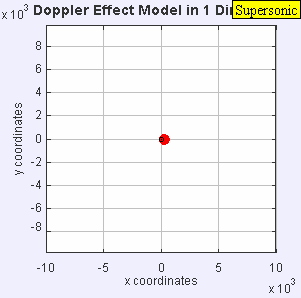Psychology is the science of behavior and mind. Psychology includes the study of conscious and unconscious phenomena, as well as feeling and thought. It is an academic discipline of immense scope. Psychologists seek an understanding of the emergent properties of brains, and all the variety of phenomena linked to those emergent properties. As a social science it aims to understand individuals and groups by establishing general principles and researching specific cases.
Baby boomers are the demographic cohort following the Silent Generation and preceding Generation X. Though there may be a few different timelines said to represent the birth years of the Baby Boom generation, the U.S. Census Bureau and many experts agree that the Baby Boom generation spans 18 birth years from 1946 to 1964. This leaves room for demographers and researchers to define and label cohort subsets if the characteristics and experiences of the youngest or oldest members correlate with or span two generations. When the term "baby boomer" is used in a cultural context, it becomes more difficult to achieve a consensus among scholars, demographers and researchers as to the precise birth years from a cultural perspective.

Lev Vygotsky was a Soviet psychologist, the founder of an unfinished Marxist theory of human cultural and bio-social development commonly referred to as "cultural-historical psychology", a prominent advocate for a "science of the Superman", a new psychological theory of consciousness, and leader of the Vygotsky Circle. As a fervent Spinozist in many respects, he was profoundly influenced by Spinoza's thought, largely in response to Spinoza's examinations concerning human emotion.
Psychological warfare (PSYWAR), or the basic aspects of modern psychological operations (PSYOP), have been known by many other names or terms, including MISO, Psy Ops, political warfare, "Hearts and Minds", and propaganda. The term is used "to denote any action which is practiced mainly by psychological methods with the aim of evoking a planned psychological reaction in other people". Various techniques are used, and are aimed at influencing a target audience's value system, belief system, emotions, motives, reasoning, or behavior. It is used to induce confessions or reinforce attitudes and behaviors favorable to the originator's objectives, and are sometimes combined with black operations or false flag tactics. It is also used to destroy the morale of enemies through tactics that aim to depress troops' psychological states. Target audiences can be governments, organizations, groups, and individuals, and is not just limited to soldiers. Civilians of foreign territories can also be targeted by technology and media so as to cause an effect in the government of their country.
Millennials, also known as Generation Y or Gen Y, are the demographic cohort following Generation X and preceding Generation Z. Researchers and popular media typically use the early 1980s as starting birth years and the mid-1990s to early 2000s as ending birth years. Millennials are sometimes referred to as "echo boomers" due to a major surge in birth rates in the 1980s and 1990s, and because millennials are often the children of the baby boomers. The characteristics of millennials vary by region and by individual, and the group experiences a variety of social and economic conditions.

A sonic boom is the sound associated with the shock waves created whenever an object travelling through the air travels faster than the speed of sound. Sonic booms generate enormous amounts of sound energy, sounding similar to an explosion or a thunderclap to the human ear. The crack of a supersonic bullet passing overhead or the crack of a bullwhip are examples of a sonic boom in miniature.
A big lie is a propaganda technique. The expression was coined by Adolf Hitler, when he dictated his 1925 book Mein Kampf, about the use of a lie so "colossal" that no one would believe that someone "could have the impudence to distort the truth so infamously". Hitler believed the technique was used by Jews to blame Germany's loss in World War I on German general Erich Ludendorff, who was a prominent nationalist and antisemitic political leader in the Weimar Republic.

The Black Eyed Peas is an American musical group, consisting of rappers will.i.am, apl.de.ap, and Taboo. Originally an alternative hip hop group, they subsequently changed their musical sound to pop and dance-pop music. Although the group was founded in Los Angeles in 1995, it was not until the release of their third album, Elephunk, in 2003, that they achieved high record sales. Since that time, the group has sold an estimated 76 million records, making them one of the world's best-selling groups of all time. As of 2011, according to Nielsen SoundScan, the Black Eyed Peas were the second-best-selling artist/group of all time for downloaded tracks, behind Rihanna, with over 42 million sales.

Aerial refueling, also referred to as air refueling, in-flight refueling (IFR), air-to-air refueling (AAR), and tanking, is the process of transferring aviation fuel from one military aircraft to another during flight. The two main refueling systems are probe-and-drogue, which is simpler to adapt to existing aircraft, and the flying boom, which offers faster fuel transfer, but requires a dedicated boom operator station.

Cornelia Arnolda Johanna "Corrie" ten Boom was a Dutch watchmaker and later a writer who worked with her father Casper ten Boom, her sister Betsie ten Boom and other family members to help many Jews escape the Nazi Holocaust during World War II by hiding them in her home. They were caught and she was arrested and sent to Ravensbrück concentration camp. Her most famous book, The Hiding Place, is a biography that recounts the story of her family's efforts and how ten Boom found hope while imprisoned at the concentration camp.

A studding sail, studsail or stunsail is an extra sail on a square rigged vessel or 1950s racing skiffs for use in light winds.

A derrick is a lifting device composed at minimum of one guyed mast, as in a gin pole, which may be articulated over a load by adjusting its guys. Most derricks have at least two components, either a guyed mast or self-supporting tower, and a boom hinged at its base to provide articulation, as in a stiffleg derrick.

Psychology Today is a magazine published every two months in the United States since 1967.
Gaslighting is a form of psychological manipulation that seeks to sow seeds of doubt in a targeted individual or in members of a targeted group, making them question their own memory, perception, and sanity. Using persistent denial, misdirection, contradiction, and lying, it attempts to destabilize the victim and delegitimize the victim's belief.
A helicopter parent is a parent who pays extremely close attention to a child's or children's experiences and problems, particularly at educational institutions. Helicopter parents are so named because, like helicopters, they "hover overhead", overseeing every aspect of their child's life constantly.

The Adapted Mind: Evolutionary Psychology and the Generation of Culture is a 1992 book edited by the anthropologists Jerome H. Barkow and John Tooby and the psychologist Leda Cosmides. First published by Oxford University Press, it is widely considered the foundational text of evolutionary psychology (EP), and outlines Cosmides and Tooby's integration of concepts from evolutionary biology and cognitive psychology, as well as many other concepts that would become important in adaptationist research.

The St. Croix Boom Site is a historic and scenic wayside on the St. Croix River in Stillwater Township, Minnesota, United States. It commemorates the location of a critical log boom where, from 1856 to 1914, timber from upriver was sorted and stored before being dispatched to sawmills downstream. The site was developed as a roadside park along Minnesota State Highway 95 in the 1930s. In 1966 it was designated a National Historic Landmark for its national significance in the theme of industry. It was nominated for being the earliest, most important, and longest serving of the log storage and handling operations that supported Minnesota's major logging industry. Virtually no traces remain of the site's original buildings and structures.

Roller furling is a method of furling a yacht's staysail by rolling the sail around a stay. Roller furling is typically used for foresails such as jibs or genoas.

Psychological Types is Volume 6 in the Princeton / Bollingen edition of The Collected Works of C. G. Jung. It was also published in the U.K. by Routledge. The original German language edition, Psychologische Typen, was first published by Rascher Verlag, Zurich in 1921. Extensive detailed abstracts of each chapter are available online.

"Boom Boom Pow" is a song by The Black Eyed Peas released as the lead single from their fifth studio album, The E.N.D.















